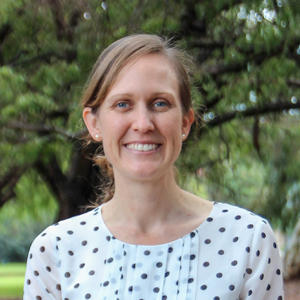
Dr Asha Bowen
The Kids Research Institute Australia researchers have confirmed that skin infections in many Aboriginal children across northern Western Australia are going unrecognised and under-treated as clinicians focus on conditions perceived as more serious.
This was despite the fact that untreated skin infections such as scabies and impetigo (school sores) could lead to life-threatening conditions such as kidney disease, rheumatic heart disease and blood poisoning.
The Kids paediatric infectious diseases specialist Dr Asha Bowen said the recently published study found clinicians ‘normalised’ skin infection when it occurred at high rates in the communities they dealt with.
“We know from previous studies that Aboriginal people in the north of Australia have some of the highest rates of skin infection in the world, yet we’re not always seeing this being recognised at the clinical level or reflected in hospital records,” Dr Bowen said.
“When Aboriginal children are assessed at hospitals, it’s often for a more acute condition like pneumonia or gastroenteritis, and that tends to be what the clinicians focus on. Also, skin infection can be so common in these communities it is regarded as normal, both by health workers and the community.
“It means the underlying skin problem isn’t always noticed or treated – paving the way for serious complications later on.”
Dr Bowen said it was something researchers had suspected but couldn’t previously demonstrate with solid data.
“Now, after conducting a clinical study where we assessed new hospital admissions and compared the results to past records, we have the data to back it up – and that means we’re in a better position to do something about it.”
The research team assessed 158 children (predominantly Aboriginal) admitted to Broome Hospital and Hedland Health Campus for any reason, checking them for scabies and impetigo to find out how many kids really have skin infections.
They compared this with a review of charts for 77 children admitted to the same hospitals a year earlier, to find out how many kids were reported to have skin infections.
This showed that reporting skin infections when looking back was not as good. For example, scabies was not recorded at all in the look back but accounted for 8.2% of children examined by the researchers. Similarly, impetigo was less common in the look back (19.5%) compared to the researchers’ assessment (49.5%).
“The findings of this study have significant implications for health policy in regions with high prevalence of scabies and impetigo, including communities across northern Australia,” Dr Bowen said.
“We don’t want to blame doctors or Aboriginal communities. We know there are all sorts of issues that contribute to high rates of skin infections, including poor infrastructure, housing and environmental health conditions.
“Rather, we want to recognise this as a big problem that we can all address by improving training and awareness, and providing tools to help doctors and other health care workers better recognise and treat skin infections early on.”
The study, led by Daniel Yeoh of the Wesfarmers Centre of Vaccines and Infectious Diseases at The Kids Research Institute Australia and the Department of Infectious Diseases at Princess Margaret Hospital, was facilitated and supported by WACHS Pilbara, and WACHS Kimberley.
A paper detailing the study, Are scabies and impetigo ‘normalised’? A cross-sectional comparative study of hospitalised children in northern Australia assessing clinical recognition and treatment of skin infections, was published on 3 July in the PLOS journal, Neglected Tropic Diseases.
FAST FACTS
- About 45 per cent of Aboriginal children living in remote communities across northern Australia are affected by impetigo at any one time – the highest prevalence in the world – and scabies is endemic in some communities.
- Impetigo affects an estimated 162 million children in low and low-middle income countries at any one time.
-- ENDS –
